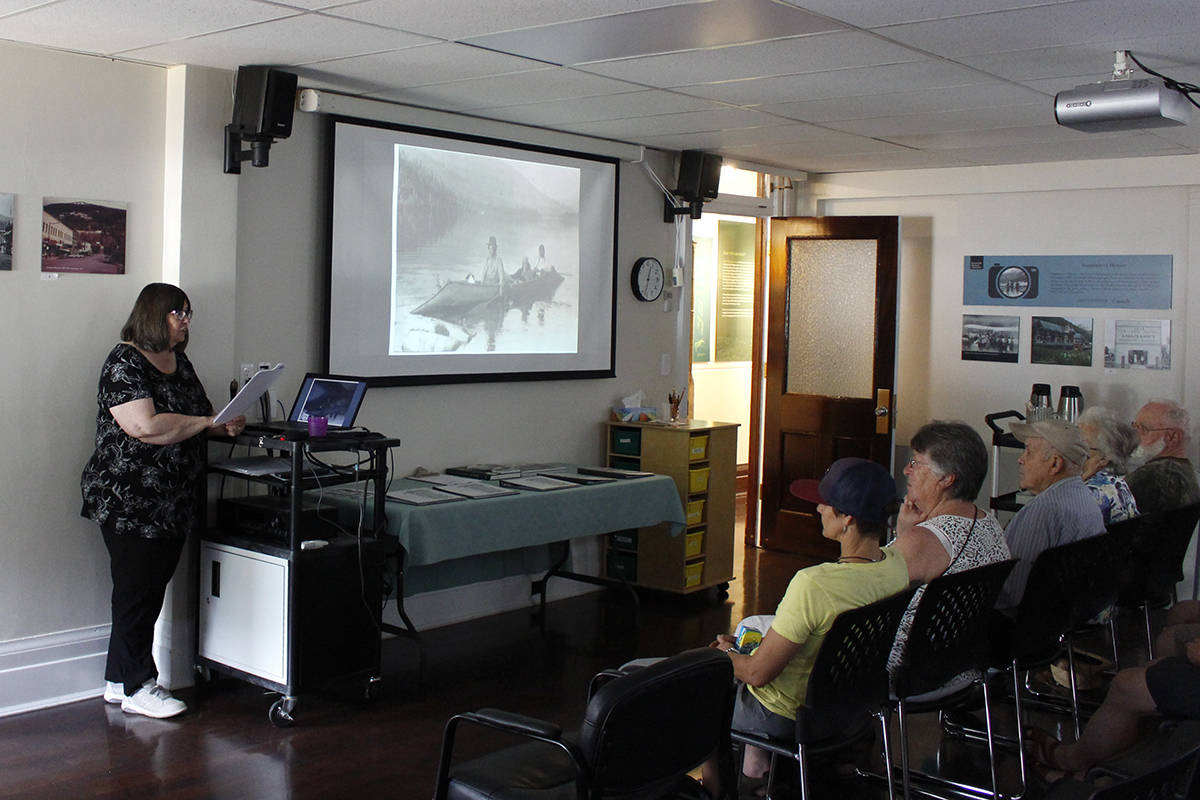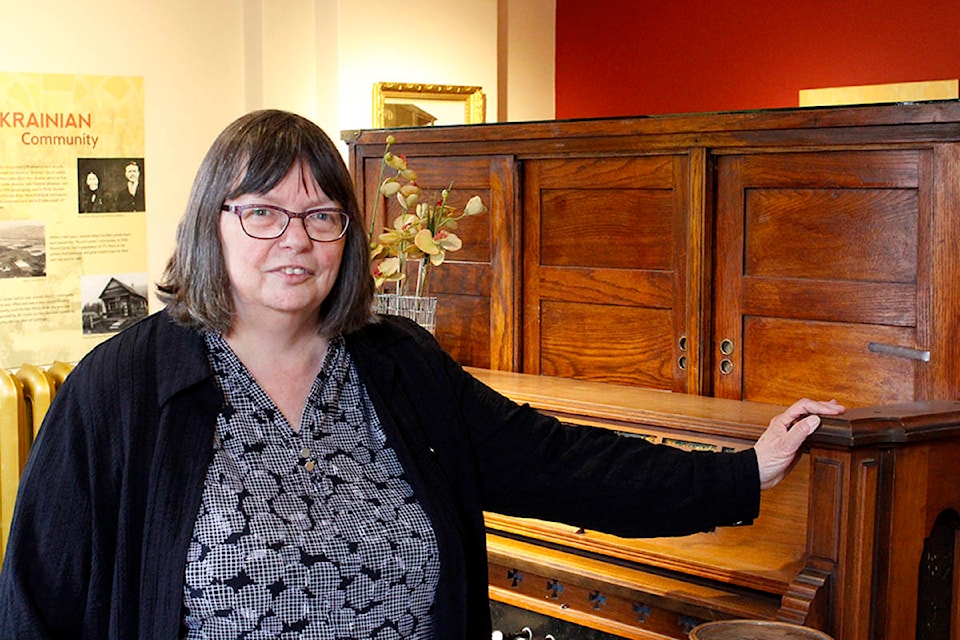The Revelstoke Museum and Archives hosted a special presentation Thursday surrounding the history of the Sinixt First Nation in the Revelstoke region.
The presentation, held on National Indigenous Peoples Day, included information on the Sinixt First Nation, who’s territory encompasses what is now Revelstoke.
Revelstoke Museum and Archives curator Cathy English said the acknowledgement of First Nation history represents a progression in the way we now look at our past.
“It’s a great leap forward for us from 20 years ago when our published history did not acknowledge any First Nations territory in this area up until today, when every school child knows the names of the four First Nations and they are acknowledged at public events,” said English in her presentation.
The event, a special installment of the Revelstoke Museum and Archives’ Brown Bag Lunch series, took place in the museum’s upstairs program room for around 20 guests.
RELATED: Revelstoke Museum and Archives to host special presentation on Sinixt Nation
English’s presentation on the Sinixt First Nation explored not only the way of life the group has carried out in the past, but also the discrimination and prejudice which was held against them.
Excerpts from newspaper articles and editorials were presented by English, highlighting the hateful speech which was commonplace when discussing the Sinixt people as recently as 1895.
One headline from 1895, using the title of “Colvilles” in the place of Sinixt, stated “Dangerous Colvilles; They should be interdicted in British Columbia; American Indians terrorize settlers in the Columbia valley; What some of the whites say about them; The authorities should act immediately.”
In her presentation, English brought attention to the fact that the history of the Sinixt First Nation has been long ignored, however recent changes have brought a positive attention to their history in the Revelstoke area.
“I think it’s very important that we’re at a point where we’re acknowledging their history and acknowledging their presence,” said English.
The Sinixt First Nation territory, according to their webpage, extends from north of Revelstoke to roughly the Kettle Falls region in the Washington, and from the Monashee Ridge in the west to the Rocky Mountain Ridge in the east.
Approximately 80 per cent of the territory held by the Sinixt First Nation is in Canada, with the remaining 20 per cent existing in the northern United States.
The Sinixt First Nation is one of four First Nations which have held territory in Revelstoke and the surrounding areas, along with the Secwepemc, the Ktunaxa and the Syilx Nations.
Thursday’s presentation was held as part of National Indigenous Peoples Day, an annual Canada-wide event which aims to “celebrate the heritage, diverse cultures and outstanding achievements of First Nations, Inuit and Metis,” as stated by the Government of Canada website.
National Indigenous Peoples Day, held every year on June 21 to coincide with the summer solstice, was first announced in 1996 as National Aboriginal Day.
In 2017, Prime Minister Justin Trudeau renamed the day to its current title.
@NathanKunz1
nathan.kunz@revelstokereview.com
Like us on Facebook and follow us on Twitter.

